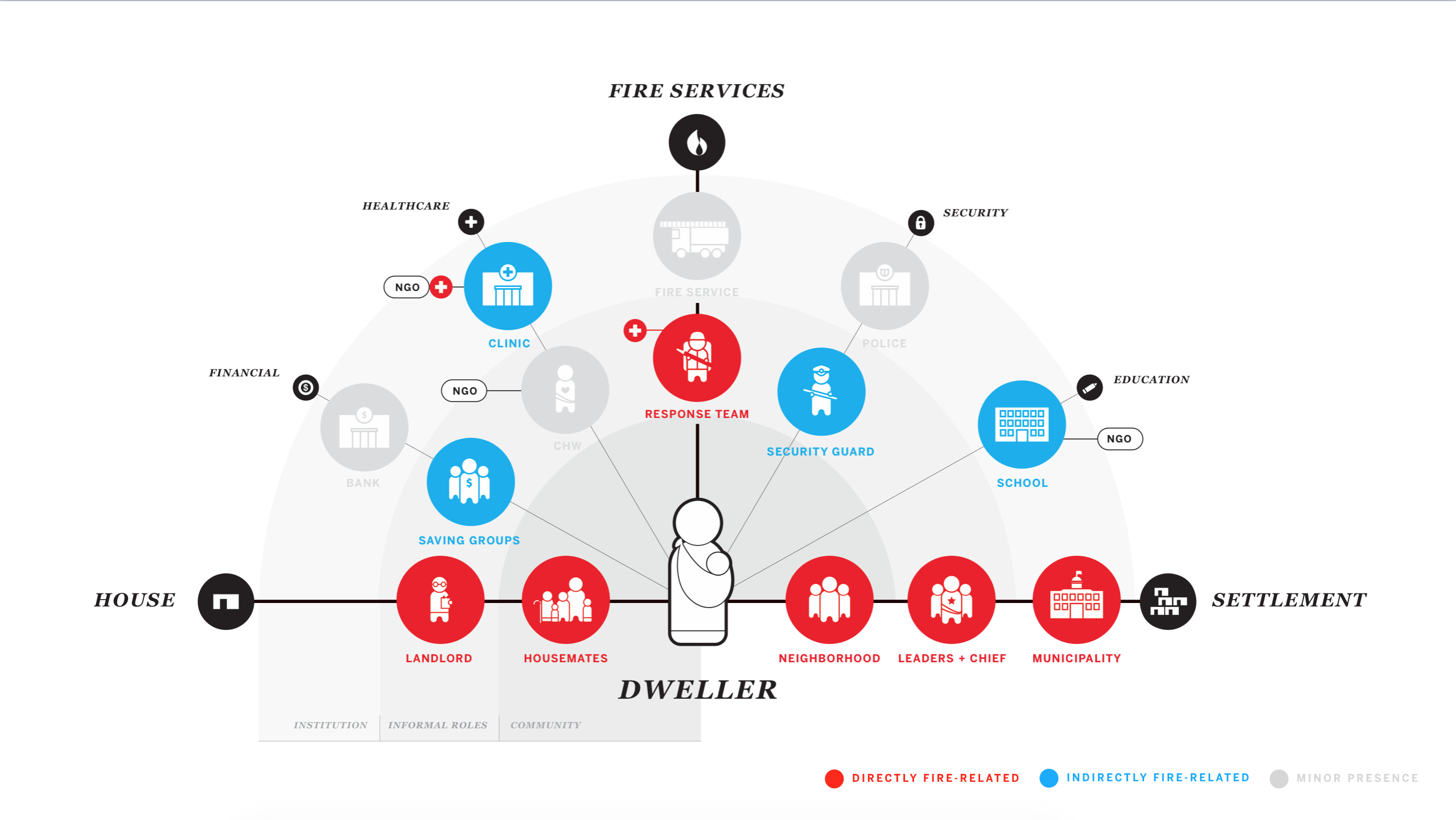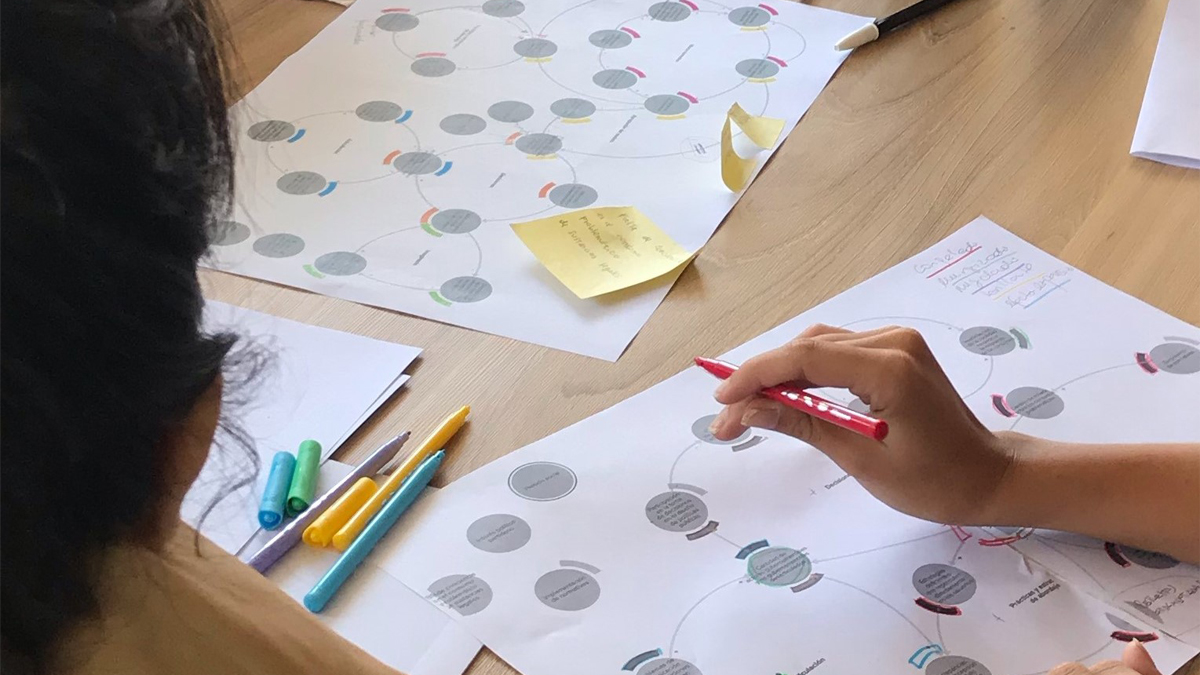what is it
The ecosystem map is a synthetic representation capturing all the key roles that have an influence on the user, organization and service environment. The ecosystem map is built by first displaying all the entities, and then connecting them based on the type of value they exchange.
use it to
Uncover existing gaps and identify valuable opportunities for synergies.
remember to
Map all the relationships as a giving and a receiving: the value is in the loops.
step by step guidelines
01
Identify all players and entities involved in the service supply and delivery.
Search in depth also for players operating behind the scenes, as well as the ones not directly involved with the service but that have nevertheless an impact on it.
02
Place the user at the center of the worksheet, then position the other players in the space around. Try to put closer to the center the ones that have more importance for the user. When they are all on the map, start tracing connections between the user and other players and then among the latter.
Use different types of line (appearance, colour, stroke) to represent different kinds of relationship such as information exchange, money exchange, etc.
03
Take a step backwards and observe the map. Do you notice anything missing? If you are not just by yourself, discuss within the team.
Add erasable hand-written notes or use post-its, in order to keep note of emerging observations and discussions.
04
Drawing on the new additions, highlight pain points or gaps in the map. This activity helps in understanding which aspects need to be improved or further explored, and to share these insights with other team members or stakeholders.
Keep visualizing any new detail noticed on the map, for example using further colors or dividing the players in sub-sets.

